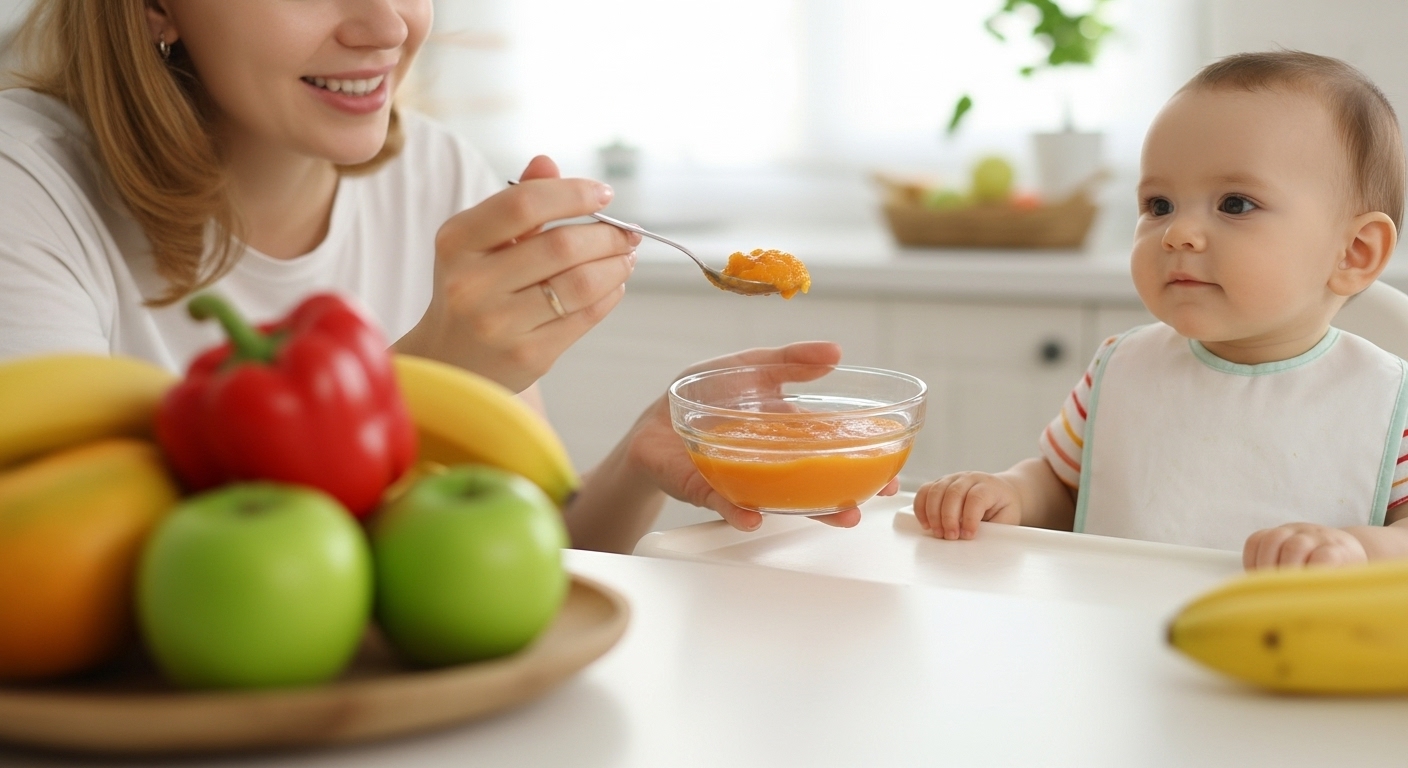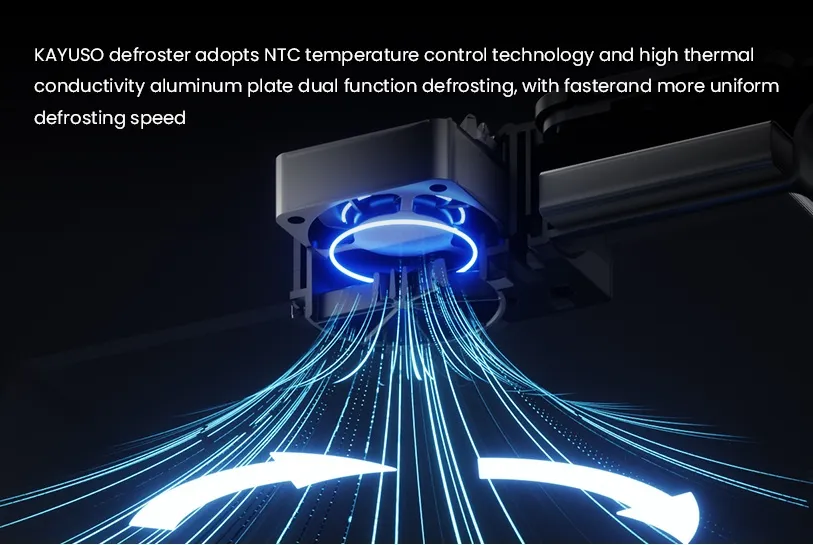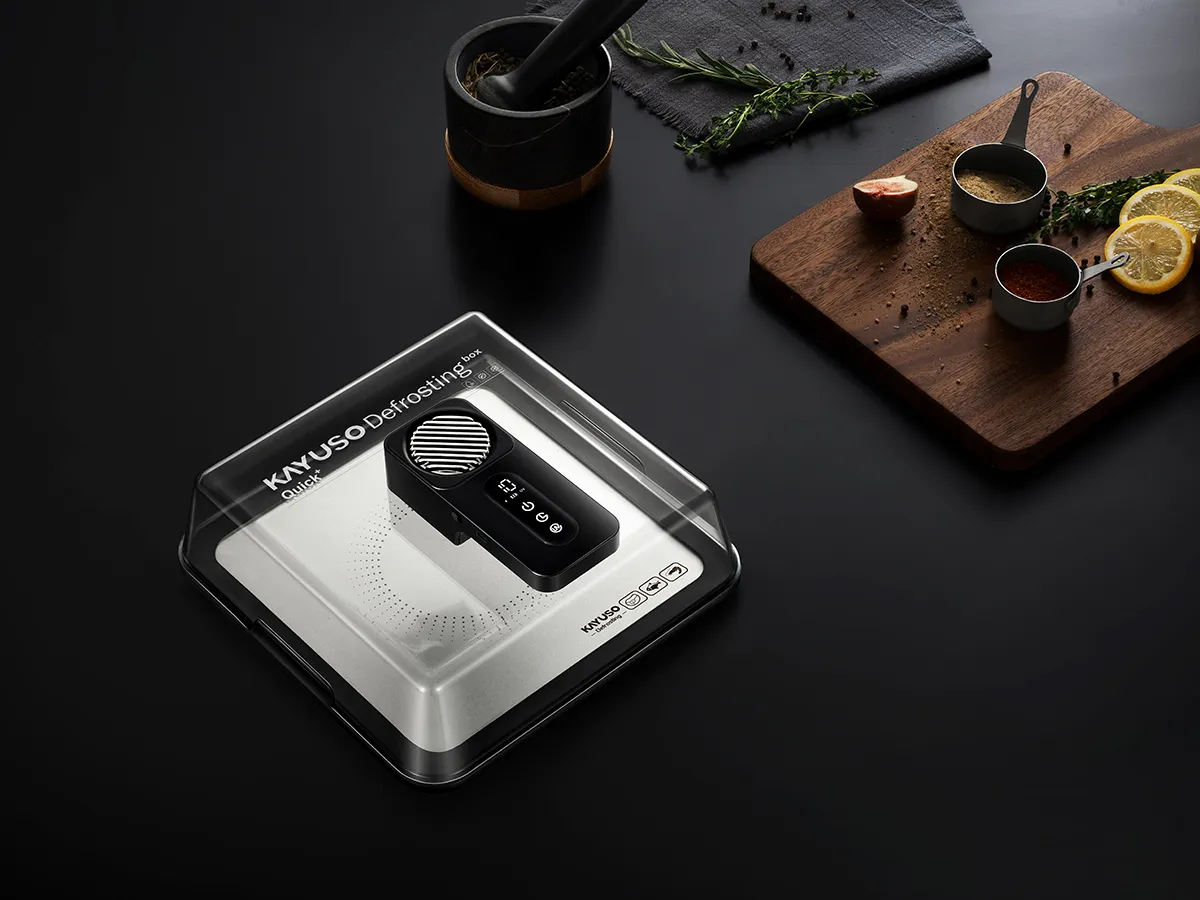As a parent, ensuring that every bite of your baby’s food is safe, nutritious, and delicious matters. Defrost baby food may be simple to accomplish, but it hides many safety details that are easy to forget. Improper thawing methods may lead to bacterial growth, nutrient loss, and even health threats. Today, we’re going to talk about safely defrosting baby food and introducing a game-changer tool—the KAYUSO defrosting tray—to help you become an expert on the best way to defrost baby food. As a working mom or stay-at-home mom who loves convenience, this advice will make you feel more confident and at ease.
Why is Safely to Defrost Baby Food?
Newborn infants still don’t have complete immune systems, hence are less capable of resisting food-borne pathogen infections. According to the World Health Organization (WHO), one of the causes of diarrheal disease among infants and children is poor food handling. To defrost baby food is not all about preserving flavor; it’s about keeping them healthy. Traditional thawing methods, such as leaving food at room temperature or putting it in warm water, cause the surface of food to heat up quickly to the “danger zone” (4°C to 60°C), where bacteria grow, while the interior remains frozen. This temperature disparity not only accelerates spoilage but also depletes the vitamins and minerals in the food.
For example, inappropriately defrosting breast milk or formula can lead to fat separation and nutrient loss. Therefore, each family must adopt a scientific as well as controlled defrosting methodology.
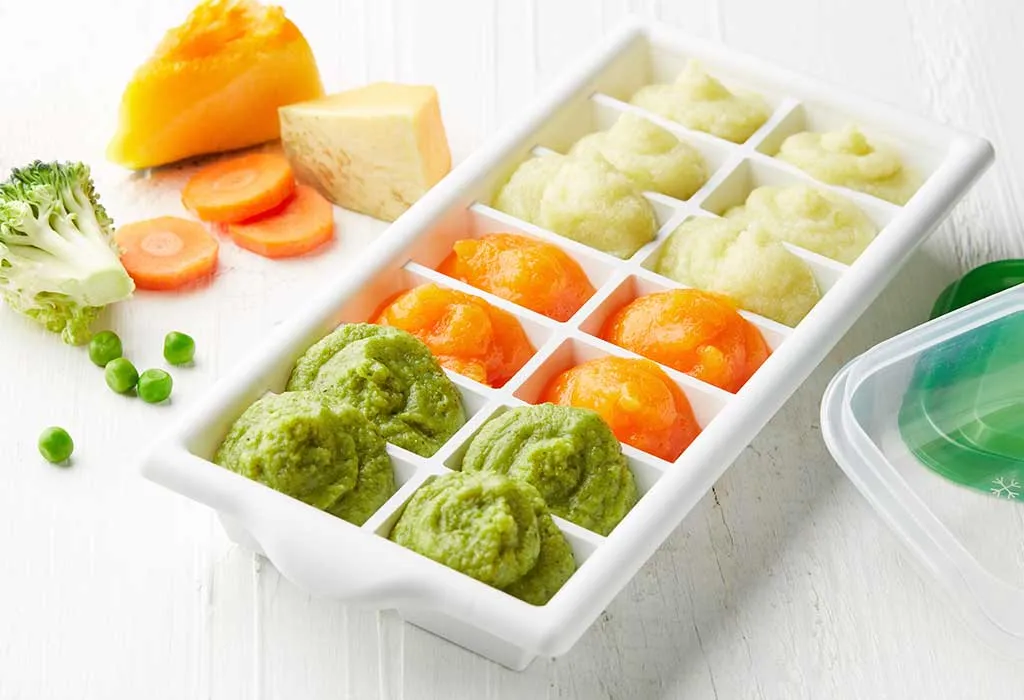
Analysis of Traditional Defrosting Methods: Pros and Cons
Let’s first look at the pros and cons of traditional methods before finalizing the optimal method to defrost baby food.
- Refrigerated thawing is the most recommended technique: placing frozen food at the refrigerator’s bottom shelf (usually taking 4-12 hours) maintains it at a uniform temperature of less than 4°C, minimizing bacterial development considerably. Its limitation is that it is slow and difficult to revise in case of an unexpected demand.
- A cold water bath is where the defrost baby food is placed in an airtight bag and submerged in cold water (changing the water every 30 minutes). Faster than refrigeration, but it is around 1-2 hours and has the risk of contamination when the seal is broken.
- Room temperature thawing is the most dangerous method—the US FDA states that food allowed to sit at room temperature for more than 2 hours should be discarded because bacterial counts double.
- Microwave thawing is quicker but very quickly results in uneven heating and the generation of “hot spots” that can burn a baby’s mouth and lead to the breakdown of nutrients like vitamin C. These comparisons illustrate that traditional approaches are ineffective or have poorly manage hazards.
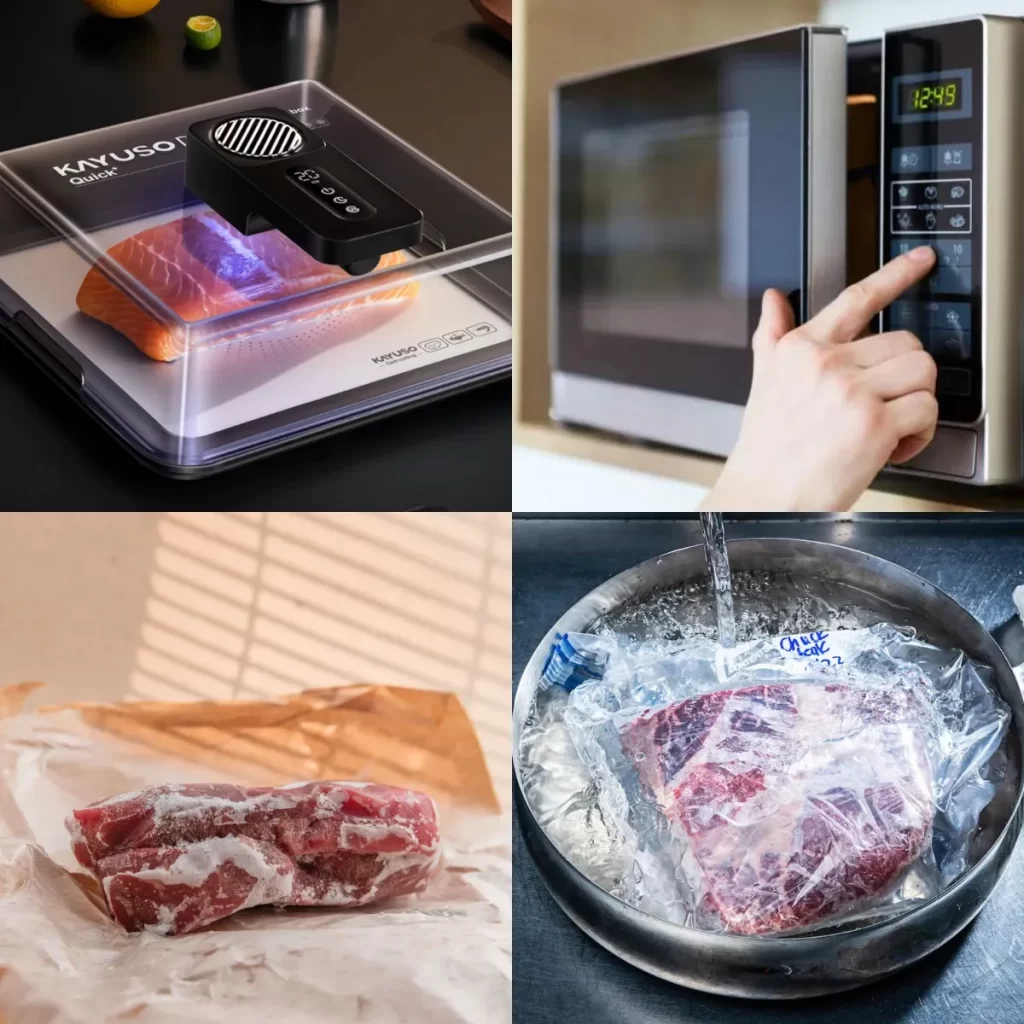
KAYUSO Defrosting Tray: The Revolutionary Safe Defrosting Product
KAYUSO defrosting tray offers a technologically advanced solution to the limitations of traditional methods. Made of a thermally highly conductive aluminum alloy material, the tray applies the law of thermodynamics to rapidly absorb ambient heat and transfer it evenly to the bottom of the food for natural thawing in just 10 minutes without water or electricity. It operates as a “thermal bridge,” accelerating heat transfer by enhancing the area of contact, giving an even warming of the foodstuff and preventing overheating in certain areas.
For example, frozen carrot puree placed in the tray typically softens to a palatable consistency in 8-12 minutes, with the core temperature always below 8°C (below the danger zone). Unlike microwaves, the KAYUSO defrosting tray defrosts baby food without disrupting its cellular structure, keeping nutrients essential to baby health in a better shape, such as B vitamins and folic acid. Users simply clean the surface of the tray and it is ready for reuse, an economical and environmentally friendly option.
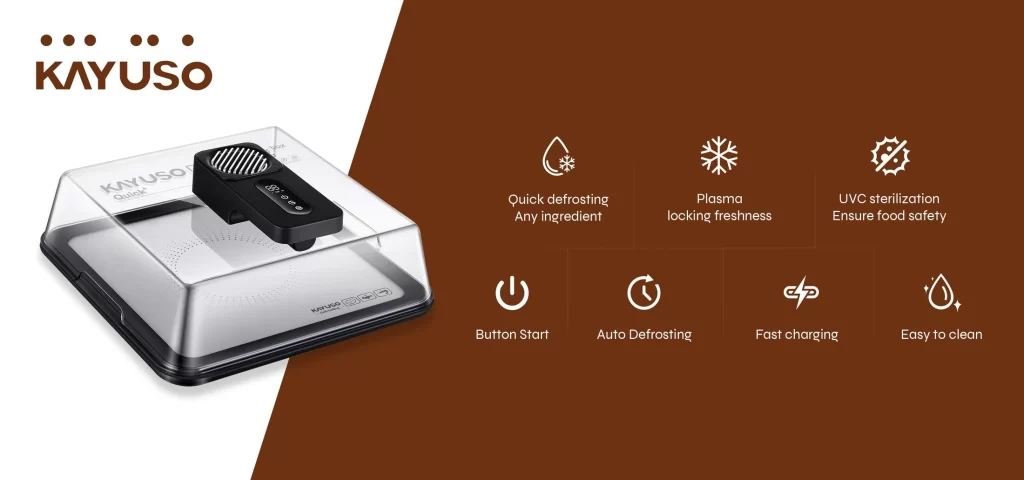
Safe Handling Guidelines to Use the Defrosting Tray
To make the most of the KAYUSO defrosting tray to defrost baby food, do the following:
First, place the tray on a flat, dry surface not in direct sunlight or heat (such as near a stovetop) to prevent over-thawing.
Second, position frozen baby food (like ice cubes or jarred puree) in the middle of the tray with complete contact with the bottom. Vary cooking time according to food thickness to defrost baby foods: thin fruit purees would take approximately 6-8 minutes, and thicker meat purees would take 12-15 minutes.
Key Tips: Defrost baby food immediately before cooking, and never refreeze it. The United States Department of Agriculture (USDA) indicates that multiple refreezing doubles the bacterial contamination risk by 50%. Furthermore, wash the tray occasionally with a gentle detergent to avoid cross-contamination. In babies who are allergic, it is advisable to utilize a special tray or sanitize it thoroughly. By integrating the KAYUSO defrosting tray into these habits, it is simple to defrost baby food and attain the objective safely.
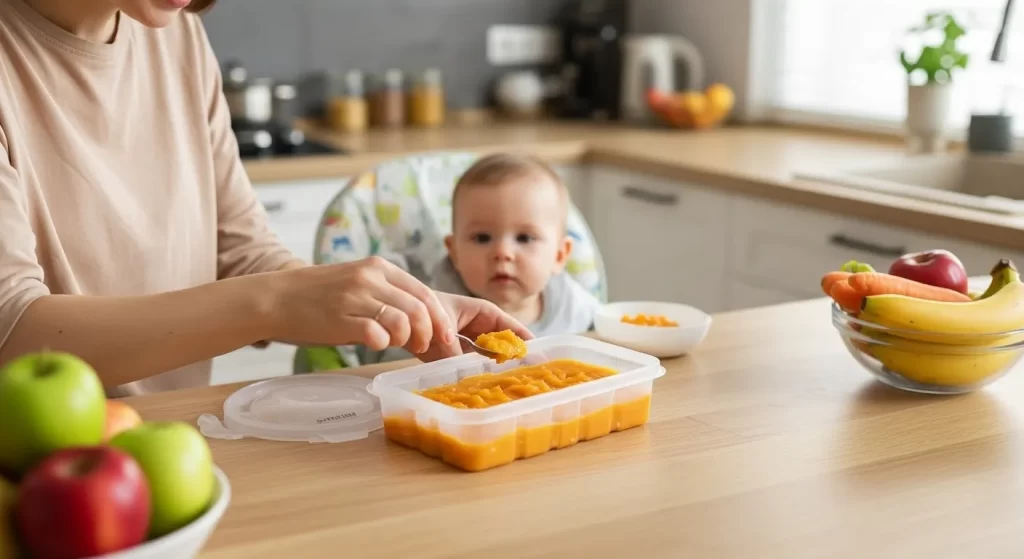
General Tips and Avoidable Common Mistakes
In addition to tool use, a few special tips can contribute further to safety.
Zone Management: Set particular areas within the fridge and on the counter specifically for baby food handling to avoid contact with contaminants like raw meat.
Portioning: Freeze food in portions of 30-50g each (e.g., silicone ice cube trays) to reduce thawing time and wastage.
Temperature Monitoring: Use a food thermometer to verify that the inner temperature of the food is below 8°C when thawed. Don’t make these errors:
1) Thinking “if it does not have a bad odor, it can be safely eaten” as many bacteria do not have an odor or taste;
2) Thawing under hot water in an effort to accelerate thawing—this degrades proteins and results in water-soluble nutrient loss.
3) Ignoring the wrapping material: Glass jars defrost less efficiently than metal but more efficiently than plastic (that can release chemicals). Facts prove that proper defrosting of baby food can retain over 95% of the nutrients, and improper methods result in losses of over 30%.
Conclusion: Smart Choices, Protect Your Baby’s Health
It’s an art and science to defrost baby food safely. By grasping the thermodynamic patterns of bacterial growth and the physical principles of nutrient conservation, parents are better able to make informed choices. The most efficient, safe, and convenient method of baby food defrosting is a balance of the three. KAYUSO defrosting tray is a clever device with this as its goal. It doesn’t just make meal prep easier but takes advantage of physical principles for uniform defrosting at low temperatures, essentially eliminating health hazards. As a modern parent, spending on something like this equals spending for your baby’s health and your own peace of mind.

About KAYUSO
KAYUSO’s factory is equipped with advanced equipment and precision production lines. From raw material selection to product assembly and testing, we provide efficient and rigorous production processes throughout the entire process, ensuring that each defrosting tray meets international quality standards. The KAYUSO defrosting tray requires no electrical power, is safe and environmentally friendly, and defrosts quickly in 10 minutes, allowing you to naturally defrost baby food ingredients in a short period of time, locking in their freshness and nutrients. We are currently recruiting distributors worldwide to promote this revolutionary kitchen solution.

Defrost Baby Food’s FAQ
Q: Is the Defrosting Tray applicable to all defrost baby foods?
A: Yes, the KAYUSO tray can be utilized for daily baby foods, like pureed fruits, vegetables, meat, and ice packs for breast milk. But for highly fluid liquids (such as soup), it is recommended that they be placed in containers first before placing them on the tray.
Q: Can defrosted food be refrozen?
A: Never recommended. USDA regulations emphasize that thawing serves to activate the bacteria in food and refreezing exposes the food to contamination. Defrost only what you’re going to consume at that time.
Q: How do I clean a defrosting tray?
A: Wipe clean after use with a soft cloth and mild soap. Avoid scratching with steel wool to prevent marring the thermally conductive coating. Sanitize regularly with alcohol wipes.
Q: What are the advantages of a defrosting tray over microwave thawing?
A: Microwaves cause nutrient loss and burns, while a defrosting tray provides physical heat conduction to achieve even, low-temperature thawing, preserving nutrients more safely and non-electrically.
Q: What determines thawing time?
A: Room temperature, thickness of food, and starting temperature all influence the time. Summer defrosting is typically quicker (8-10 minutes), whereas winter defrosting could take 12-15 minutes. It is advisable to monitor and regulate the time on first usage.

